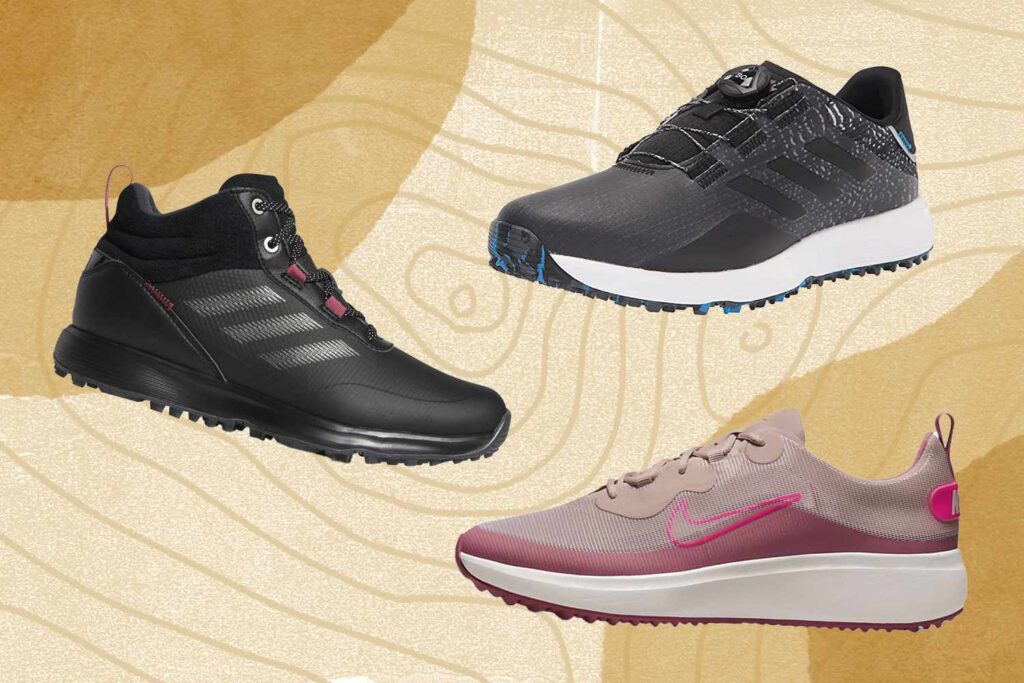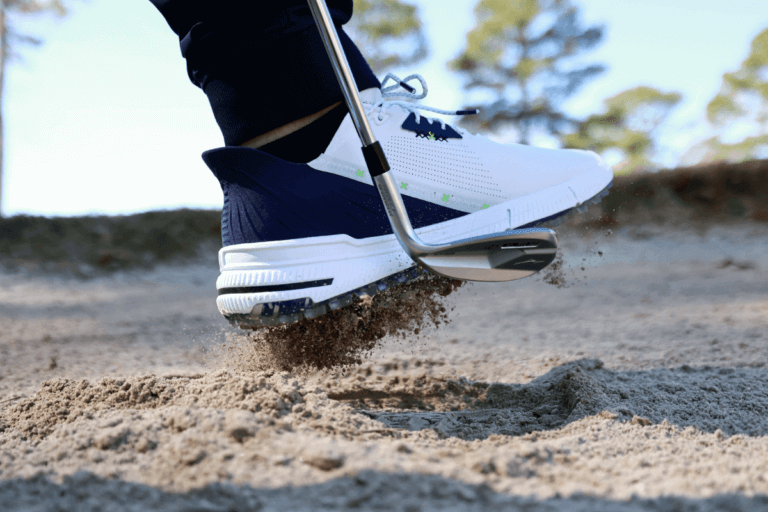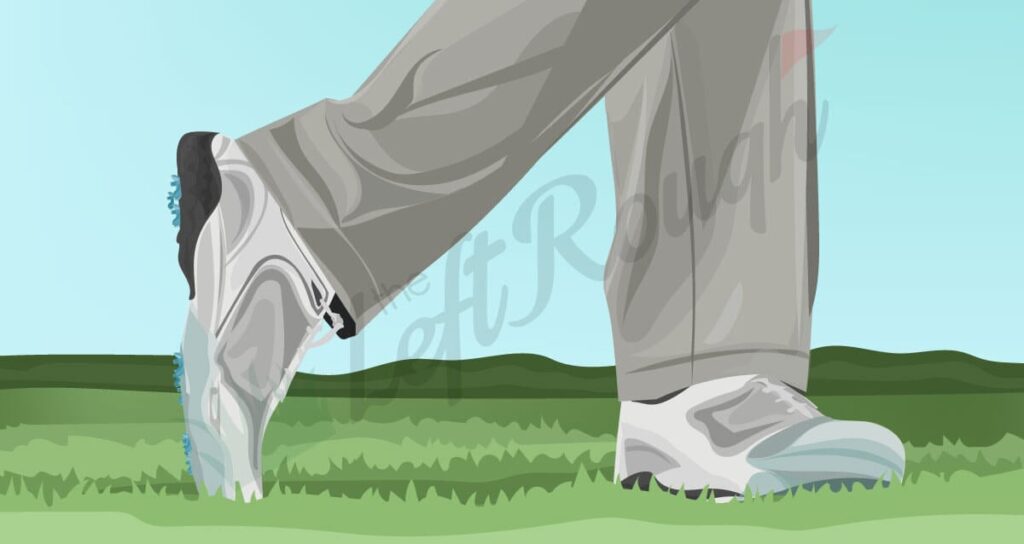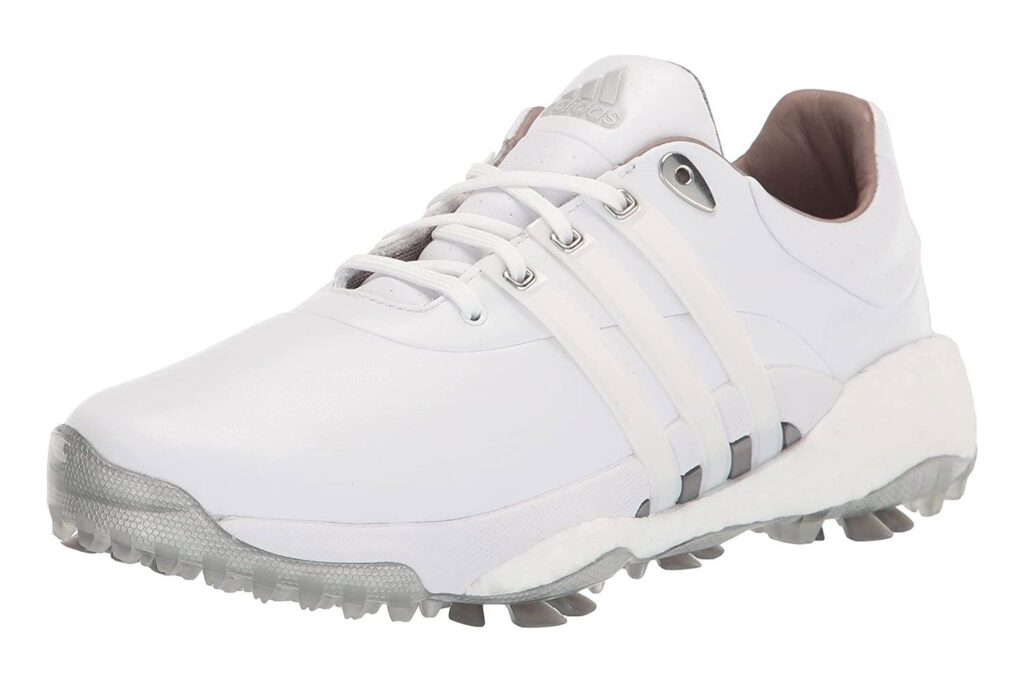Are you an avid golfer looking to enhance your comfort on the green? Look no further! This article will guide you through the process of selecting the perfect pair of golf shoes that prioritize your ultimate comfort. With various factors to consider, such as fit, cushioning, and material, you’ll be equipped with the knowledge to make an informed decision and elevate your golfing experience to new levels of enjoyment. Say goodbye to sore feet and hello to optimum comfort with the right pair of golf shoes.

Factors to Consider
When choosing the right golf shoes for comfort, there are several important factors to consider. By taking into account these factors, you can ensure that you find a pair of golf shoes that provide the ultimate comfort and support for your feet.
Style
The first factor to consider is the style of the golf shoes. Golf shoes come in a variety of styles, including traditional lace-up shoes, spikeless shoes, and even golf sandals. It is important to choose a style that not only looks good but also provides the necessary support and comfort for your feet.
Size
Another crucial factor to consider is the size of the golf shoes. Ill-fitting shoes can lead to discomfort and even foot injuries. It is recommended to get your feet measured professionally to ensure that you choose the right size. Keep in mind that different brands may have slightly different sizing, so it’s essential to try on the shoes before making a purchase.
Material
The material of the golf shoes is also an important consideration. Golf shoes are typically made from leather, synthetic materials, or a combination of both. Leather shoes are known for their durability, breathability, and water resistance. On the other hand, synthetic materials offer flexibility, lightweight, and often a more affordable price tag. It’s essential to choose a material that suits your personal preferences and playing conditions.
Fit
The fit of the golf shoes is crucial for comfort. A shoe that is too tight can cause discomfort and pinching, while a shoe that is too loose can lead to blisters and instability. Look for golf shoes that provide a snug fit without being overly tight. Make sure there is enough room in the toe box for natural movement and wiggle of your toes.
Support
The level of support provided by the golf shoes is also an essential factor to consider. Look for shoes that offer excellent arch support to prevent foot fatigue and discomfort during long rounds of golf. Additionally, consider the lateral support provided by the shoes to ensure stability and prevent injuries during lateral movements on the golf course.
Flexibility
Flexibility is another factor to consider when choosing golf shoes for comfort. Shoes that are too stiff can restrict movement and lead to discomfort. Look for shoes that offer a good balance between support and flexibility, allowing your feet to move naturally as you swing the golf club.
Foot Type and Pronation
Understanding your foot type and pronation is crucial when selecting golf shoes for comfort. These factors can significantly affect the fit and support you require from your shoes.
Understanding Your Foot Type
There are three main foot types: neutral, high arches, and flat feet. Neutral feet have a natural arch that provides a good balance of shock absorption and stability. High arches have a more pronounced arch, which requires extra cushioning and support. Flat feet have little to no arch, so they require shoes with excellent arch support and stability.
By determining your foot type, you can choose golf shoes that cater to your specific needs and provide the necessary comfort.
Determining Your Pronation Type
Pronation refers to the foot’s natural inward rolling motion during walking or running. There are three main types of pronation: neutral pronation, overpronation, and underpronation (supination).
Neutral pronation is the ideal pronation, where the foot rolls inward slightly to distribute the impact of each step evenly. Overpronation occurs when the foot rolls inward excessively, causing the arch to collapse and leading to potential foot and ankle problems. Underpronation (supination) happens when the foot doesn’t roll inward enough, resulting in poor shock absorption.
Knowing your pronation type can help you choose golf shoes that offer the appropriate support and cushioning to maintain proper foot alignment and prevent discomfort.
Features for Comfort
To ensure the utmost comfort in your golf shoes, there are several features to look for. These features can enhance the overall experience and prevent foot fatigue and discomfort.
Cushioning
One of the most crucial features for comfort in golf shoes is proper cushioning. Look for shoes that have ample cushioning in the midsole and heel areas. This will provide shock absorption and reduce the impact on your feet during each swing, as well as walking long distances on the course.
Arch Support
Good arch support is essential for maintaining proper foot alignment and preventing discomfort. Look for golf shoes that offer adequate arch support, especially if you have high arches or flat feet. Shoes with customizable arch support, such as removable insoles, can be particularly beneficial as they allow you to adjust the support based on your specific needs.
Breathability
Another feature to consider is the breathability of the golf shoes. Playing golf can be physically demanding, and your feet can sweat during the game. Shoes with breathable materials and ventilation holes help to wick away moisture and keep your feet dry and comfortable throughout the round.
Waterproofing
If you often play in wet or dewy conditions, waterproof golf shoes are a must. Look for shoes that have waterproof membranes or treated leather to keep your feet dry even in damp environments. Additionally, waterproof shoes can provide added protection during rainy rounds, ensuring that your feet stay comfortable and dry.
Weight
The weight of the golf shoes can have a significant impact on comfort, especially during long rounds of golf. Lighter shoes can reduce fatigue and allow for better footwork and mobility on the course. However, it’s important to strike a balance between weight and stability, as overly lightweight shoes may sacrifice stability and support.
Stability
Stability is crucial when it comes to golf shoes. Look for shoes that offer good lateral support to prevent your feet from sliding or rolling during your swing. Shoes with wider bases and traction-enhancing outsoles can provide added stability, allowing you to maintain a solid foundation and generate more power in your swing.
Considerations for Different Conditions
Different weather conditions and playing environments may require specific features in your golf shoes to ensure comfort and performance.
Dry Conditions
In dry conditions, breathability and lightweight materials are key. Look for golf shoes with breathable mesh uppers or perforations to allow air to circulate and keep your feet cool. Lightweight shoes will also prevent your feet from feeling weighed down and uncomfortable during warm, dry rounds.
Wet Conditions
When playing in wet conditions or on a wet course, waterproofing becomes crucial. Look for golf shoes with waterproof membranes or treated leather uppers to shield your feet from moisture. Additionally, shoes with excellent traction and grip on the outsole are essential to prevent slips and maintain stability on wet grass.
Hot Conditions
Playing golf in hot conditions can cause your feet to sweat excessively. Look for golf shoes with breathable materials and moisture-wicking properties to keep your feet cool and dry. Additionally, consider shoes with enhanced ventilation or mesh panels to allow for maximum airflow.
Cold Conditions
When playing in cold conditions, warmth and insulation are vital for comfort. Look for golf shoes with insulated linings or materials that can provide warmth without sacrificing breathability. Additionally, shoes with traction-enhancing outsoles are crucial to maintain stability on icy or slippery surfaces.

Try Before You Buy
To ensure the optimal comfort of your golf shoes, it’s essential to try them on before making a purchase. Here are some tips to consider when trying on golf shoes:
In-Store Fitting
Visit a reputable golf store and try on different brands and styles of golf shoes. The knowledgeable staff can assist you in finding the right size and fit for your feet. Walk around in the shoes to check for any discomfort or pressure points.
Walking Test
Take a walk around the store or even outside if possible to see how the shoes feel during walking. Pay attention to any rubbing or chafing, as well as any instability or lack of support.
Wearing Different Socks
When trying on golf shoes, it’s recommended to wear the type of socks you would typically wear during a round of golf. Different socks can affect the fit and feel of the shoes, so it’s important to replicate the actual conditions as closely as possible.
Expert Recommendations
While trying on golf shoes is important, it can also be helpful to seek professional advice and read reviews from experts.
Seeking Professional Advice
Consulting with a golf professional or a podiatrist can provide valuable insights into finding the right golf shoes for comfort. They can assess your foot type, pronation, and specific needs, and make recommendations based on their expertise.
Reading Reviews
Reading reviews from other golfers and industry experts can give you an idea of the comfort and performance of different golf shoes. Look for reviews that mention specific features you are looking for, such as cushioning, arch support, and breathability.

Price Range
When it comes to golf shoes, there is a wide range of prices available. It’s important to consider your budget while also keeping in mind the features and quality you desire.
Budget-Friendly Options
If you’re on a tight budget, there are affordable golf shoe options available that still provide comfort and functionality. Look for entry-level shoes from reputable brands that offer good cushioning and support. While they may not have all the bells and whistles of higher-end shoes, they can still provide adequate comfort for casual or occasional golfers.
Mid-Range Options
Mid-range golf shoes offer a balance between affordability and quality. These shoes often incorporate more advanced features such as enhanced cushioning, arch support, and waterproofing. They are suitable for avid golfers who prioritize comfort and durability without breaking the bank.
High-End Options
For golfers who spare no expense to ensure the utmost comfort and performance, high-end golf shoes are available. These shoes often feature top-of-the-line materials, advanced cushioning technologies, customizability, and exceptional durability. While they come with a higher price tag, they can provide the highest level of comfort for serious golfers.
Maintenance Tips
To prolong the lifespan and maintain the comfort of your golf shoes, proper maintenance is crucial.
Cleaning
Regularly clean your golf shoes to remove dirt, debris, and sweat buildup. Use a soft brush or cloth to wipe the shoes clean, and avoid using harsh chemicals that can damage the materials. Follow the manufacturer’s cleaning instructions for specific shoe care recommendations.
Drying
After playing in wet conditions, it’s important to dry your golf shoes thoroughly. Stuff them with newspaper or use shoe trees to absorb moisture and help maintain their shape. Avoid placing them near direct heat sources that can warp or damage the materials.
Storage
When not in use, store your golf shoes in a cool, dry place away from direct sunlight. It’s recommended to use a shoe bag or shoe rack to protect them from dust and potential damage.

Replacing Your Golf Shoes
Even with proper maintenance, golf shoes will eventually wear out and need to be replaced.
Signs of Wear and Tear
Inspect your golf shoes regularly for signs of wear and tear. Look for worn outsoles, loose stitching, flattened cushioning, or any damage to the materials. If you notice significant wear or discomfort, it may be time to consider replacing your golf shoes.
When to Replace
The lifespan of golf shoes varies depending on factors such as frequency of use, playing conditions, and the quality of the shoes. As a general guideline, consider replacing your golf shoes every 1-2 years or when you notice a decrease in comfort and support.
Conclusion
When choosing golf shoes for comfort, it is important to consider various factors such as style, size, material, fit, support, and flexibility. Understanding your foot type and pronation can help you identify the right features and support you need. Additionally, considering different conditions and seeking expert advice can further enhance your comfort on the golf course.
By prioritizing comfort and selecting the right golf shoes, you can focus on your game and maximize your performance without worrying about foot discomfort or fatigue. Remember to maintain and replace your golf shoes as necessary to ensure long-lasting comfort and support throughout your golfing journey.







